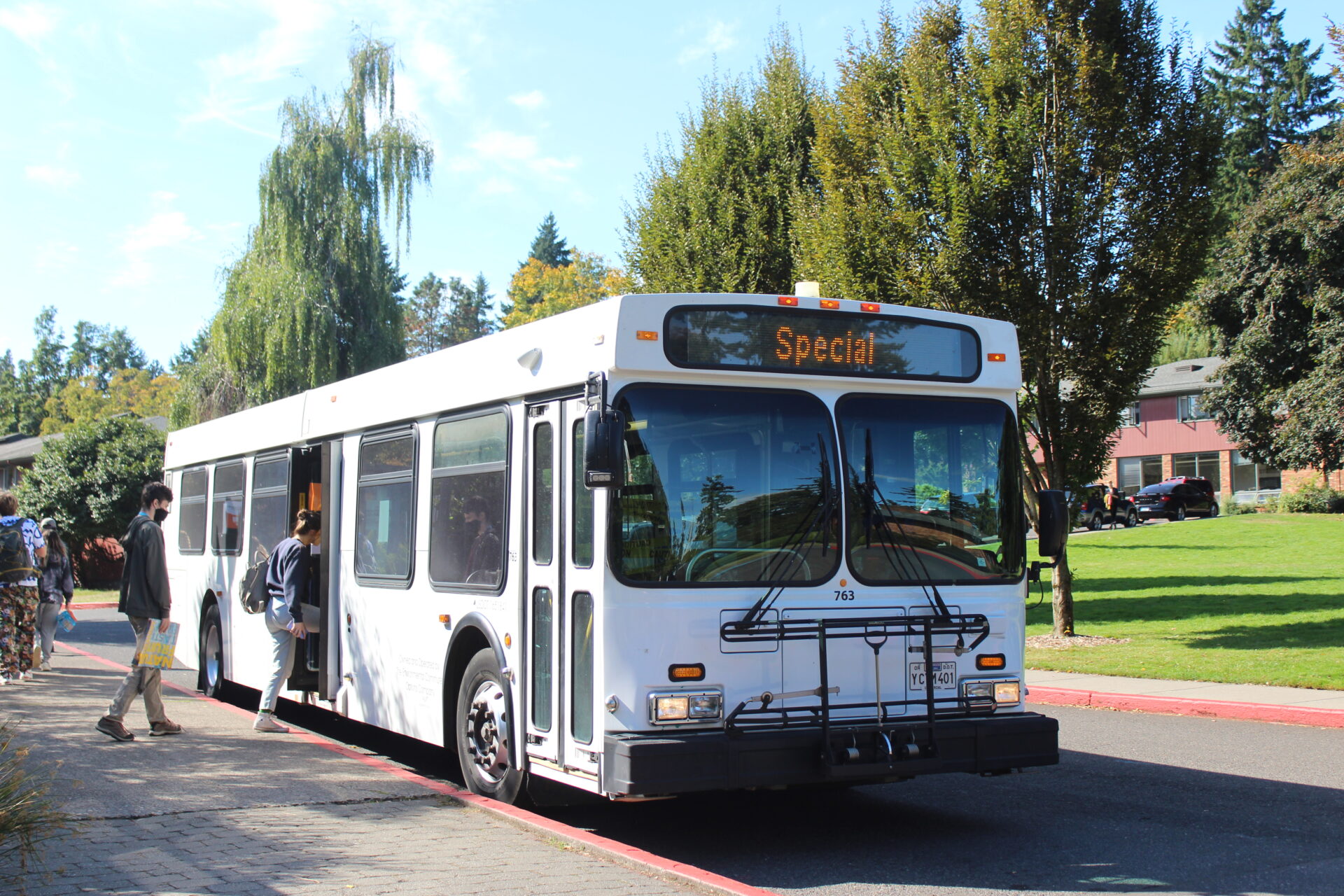
When I lived on campus, the Pioneer Express was more than a bus: It was a lifeline. This bus was my only way to buy groceries, go out with my friends and see this new city I called home. Beyond my practical needs for the bus, there was also a sense that the Pio was something of a cultural icon on campus that was deeply valued and infinitely meme-able. However, despite the public adoration for the Pio, Lewis & Clark administration have taken a lax approach to maintaining this integral part of campus life. This is evidenced by the surprising fact that our bus service receives no money from the general fund — it is entirely financed by parking passes and parking tickets.
LC takes this same apathy towards solving the commuter crisis that paralyzes parking lots around campus during regular school hours. Drivers often invent new parking spots and parking in fire lanes is very common. And as soon as someone backs out, their spot is taken within seconds.
Luckily, we have a competent, structural solution to this problem that is cost-effective, sustainable and synchronistic with the rest of Portland’s commuter culture. In fact, we have had the solution for a long time. If LC wants to start fixing its transportation issue instead of pushing it down the line for someone else to figure out, it should start treating the Pio as an integral part of campus life.
LC frames our commuter crisis as something students and staff are responsible for fixing themselves. A recent article released by the Office of Parking and Transportation (OPT) titled, “Parking Alternatives and Tips,” offers unambitious solutions that focus on individual choices instead of structural change. Suggestions from the article include utilizing alternate parking options at St. Mark’s Church, taking the TriMet line and parking earlier in the day. These “tips” are not solutions and only serve to shift responsibility away from LC.
Another strategy LC employs to shift responsibility for the commuter crisis is by becoming the victim. One of the oddest excuses LC gives for not providing lasting transportation solutions is the wealth of the surrounding neighborhood. The OPT explains in their recent article, “Unfortunately, many of the things we all love about the LC campus are also what limits our ability to quickly fix parking issues. The campus is located on a beautiful hillside, loaded with dense forest, ravines, and old neighborhoods.” Besides the fact that both school and public buses drive up and down this hill every day, making the point that LC is “just too blessed,” is never going to be a good argument for anything, ever.
There are two dimensions to the commuter crisis. Firstly, if left unresolved, this issue will only worsen. As the class of 2025 rises, the overcrowding challenges that affect all aspects of campus life are going to impact LC’s already dire parking problem. Secondly, the problem is the amount of cars, not the amount of people. There is a paradox about car commuting that the easier you make driving, the worse parking and traffic become. That means our parking problem cannot be solved by making more parking spaces. On the other hand, understanding that reducing the number of drivers is the goal means that the incoming disaster is fundamentally avoidable.
To fix the commuter crisis once and for all, LC needs to directly promote the Pio as a reasonable alternative to driving to campus. The Pio needs to run in the dense neighborhoods where students and staff live, specifically Sellwood, Multnomah Village and the South Waterfront. Besides servicing the many people that already live in these places, having the Pio run to LC’s adjacent neighborhoods will encourage students to live close to campus, thus reducing the emissions we produce every day. For the cherry on top, these three neighborhoods have shops, restaurants, and entertainment options that students who live on-campus would surely appreciate easy access to.
Transportation infrastructure has a serious upfront cost with many interlocking factors to consider. However, communal transport like this is an investment meant to pay itself off in the long run. Few things are as appreciated and valued at LC as much as the Pio, and we should begin to treat it as such.
Photograph by Nicole Nagamatsu
Subscribe to the Mossy Log Newsletter
Stay up to date with the goings-on at Lewis & Clark! Get the top stories or your favorite section delivered to your inbox whenever we release a new issue.

Leave a Reply